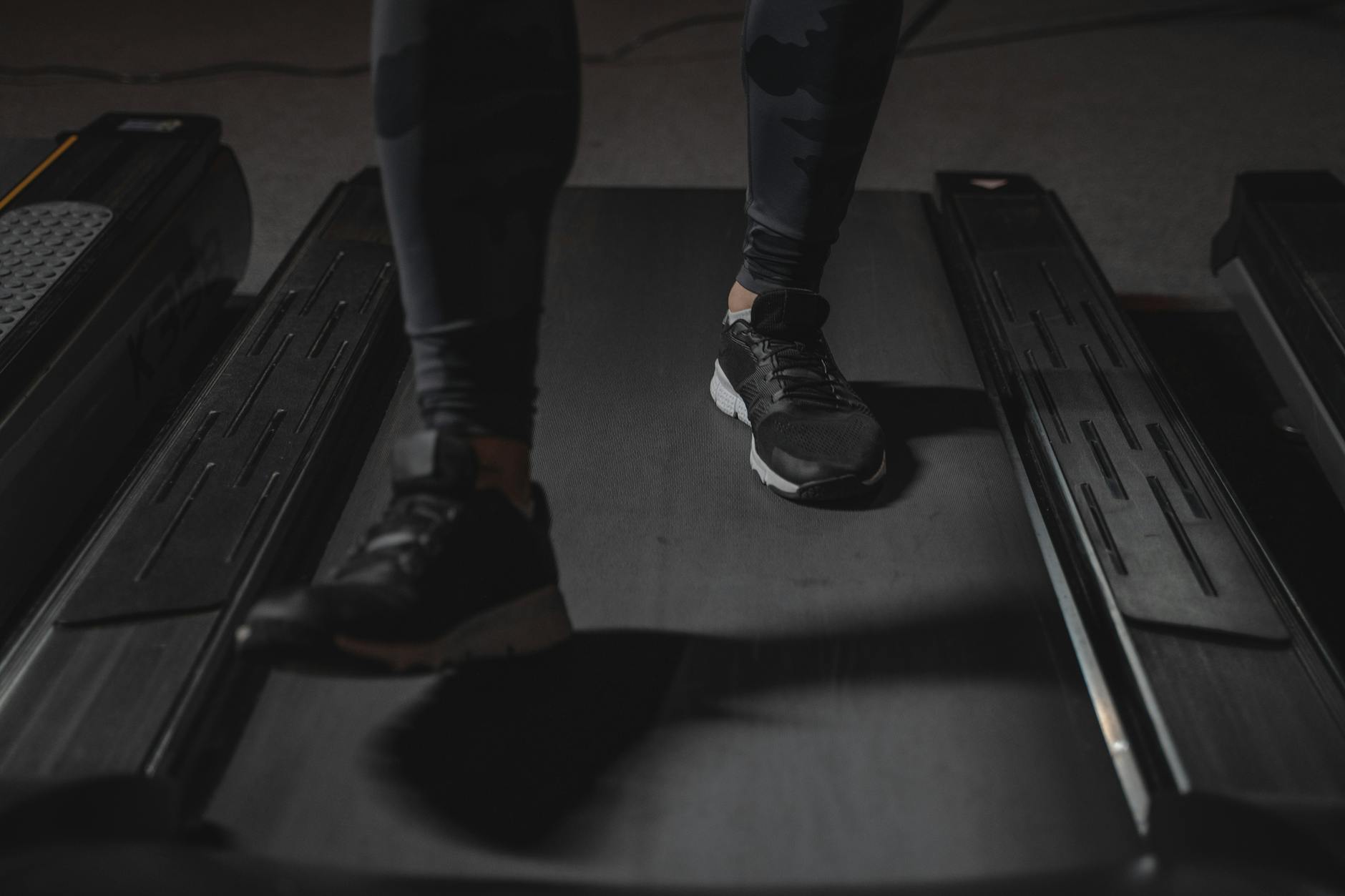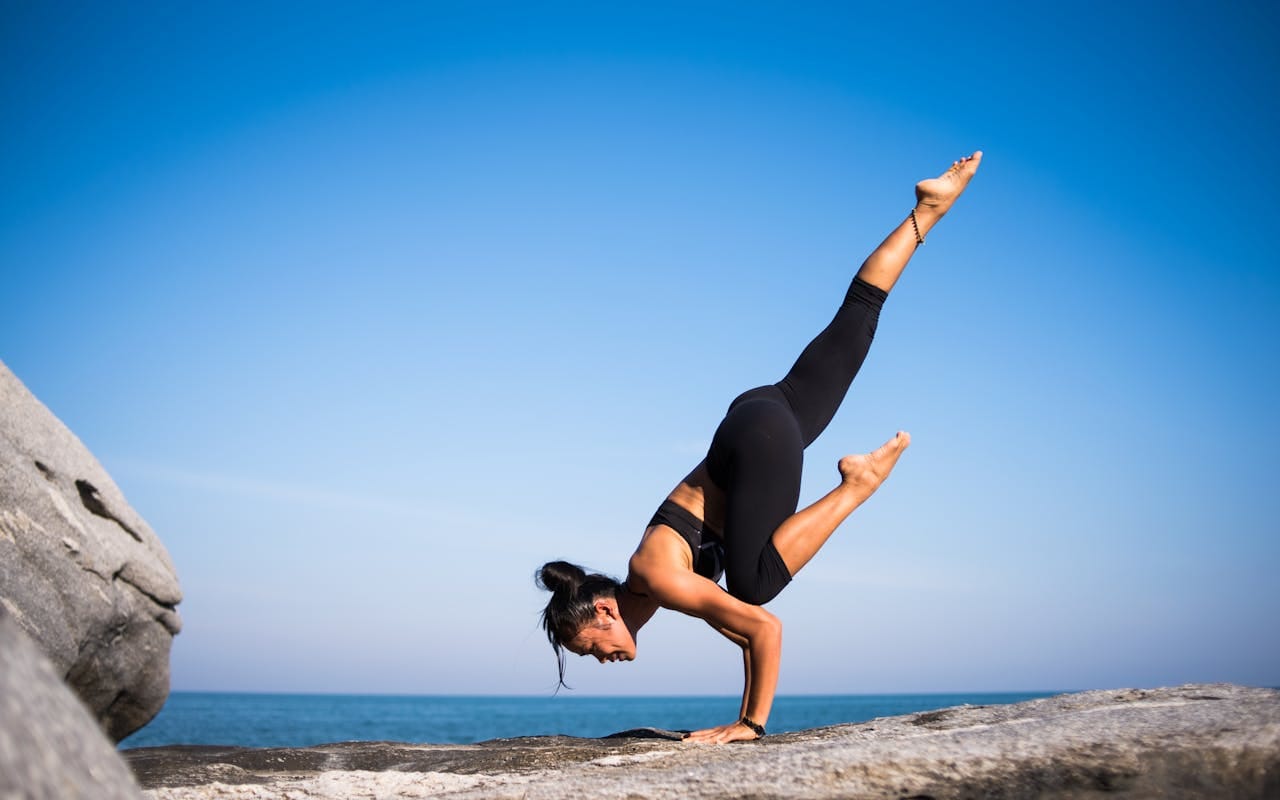High calorie burning exercises low impact
High calorie burning exercises low impact
Are you tired of high-impact workouts leaving you sore and worn out, but still craving that satisfying calorie burn? 🔥 You’re not alone. Many fitness enthusiasts find themselves caught between the desire for effective weight loss and the need to protect their joints. But what if we told you there’s a way to have your cake and eat it too?
Enter the world of low-impact, high-calorie burning exercises – the perfect solution for those seeking intense workouts without the added stress on their bodies. Whether you’re recovering from an injury, managing joint pain, or simply looking for gentler alternatives, these exercises offer a win-win scenario. From the serene glide of swimming to the rhythmic motion of rowing, we’re about to dive into a range of activities that will rev up your metabolism while keeping your feet firmly (and safely) on the ground.
In this blog post, we’ll explore seven game-changing low-impact exercises that torch calories like nobody’s business. We’ll start by unraveling the science behind these workouts, then guide you through each exercise, from pool-based routines to land-based alternatives. By the end, you’ll have all the tools you need to create a balanced, joint-friendly fitness regimen that doesn’t compromise on results. Ready to transform your workout routine? Let’s dive in! 💪🏊♂️🚴♀️

Understanding Low-Impact, High-Calorie Burning Exercises
Definition and Benefits
Low-impact, high-calorie burning exercises are activities that provide significant cardiovascular benefits and calorie expenditure while minimizing stress on joints and bones. These exercises typically keep at least one foot on the ground or have the body supported by equipment, reducing the risk of injury.
Benefits include:
- Increased cardiovascular fitness
- Effective weight management
- Improved muscle strength and endurance
- Reduced risk of joint injuries
- Suitable for various fitness levels and ages
Who Should Consider These Exercises
Low-impact, high-calorie burning exercises are ideal for:
- Individuals with joint issues or arthritis
- Overweight or obese people starting a fitness journey
- Pregnant women
- Seniors looking to stay active
- Athletes recovering from injuries
How They Differ from High-Impact Workouts
| Aspect | Low-Impact Exercises | High-Impact Workouts |
|---|---|---|
| Joint Stress | Minimal | Higher |
| Calorie Burn | Can be equally high | Generally high |
| Intensity | Adjustable | Often more intense |
| Recovery Time | Shorter | Longer |
| Injury Risk | Lower | Higher |
Low-impact exercises offer a gentler approach to fitness while still providing substantial calorie-burning benefits. They allow for longer workout durations and more frequent sessions, potentially leading to greater overall calorie expenditure. While high-impact workouts may provide quicker results, low-impact alternatives offer a sustainable, joint-friendly option for long-term fitness goals.
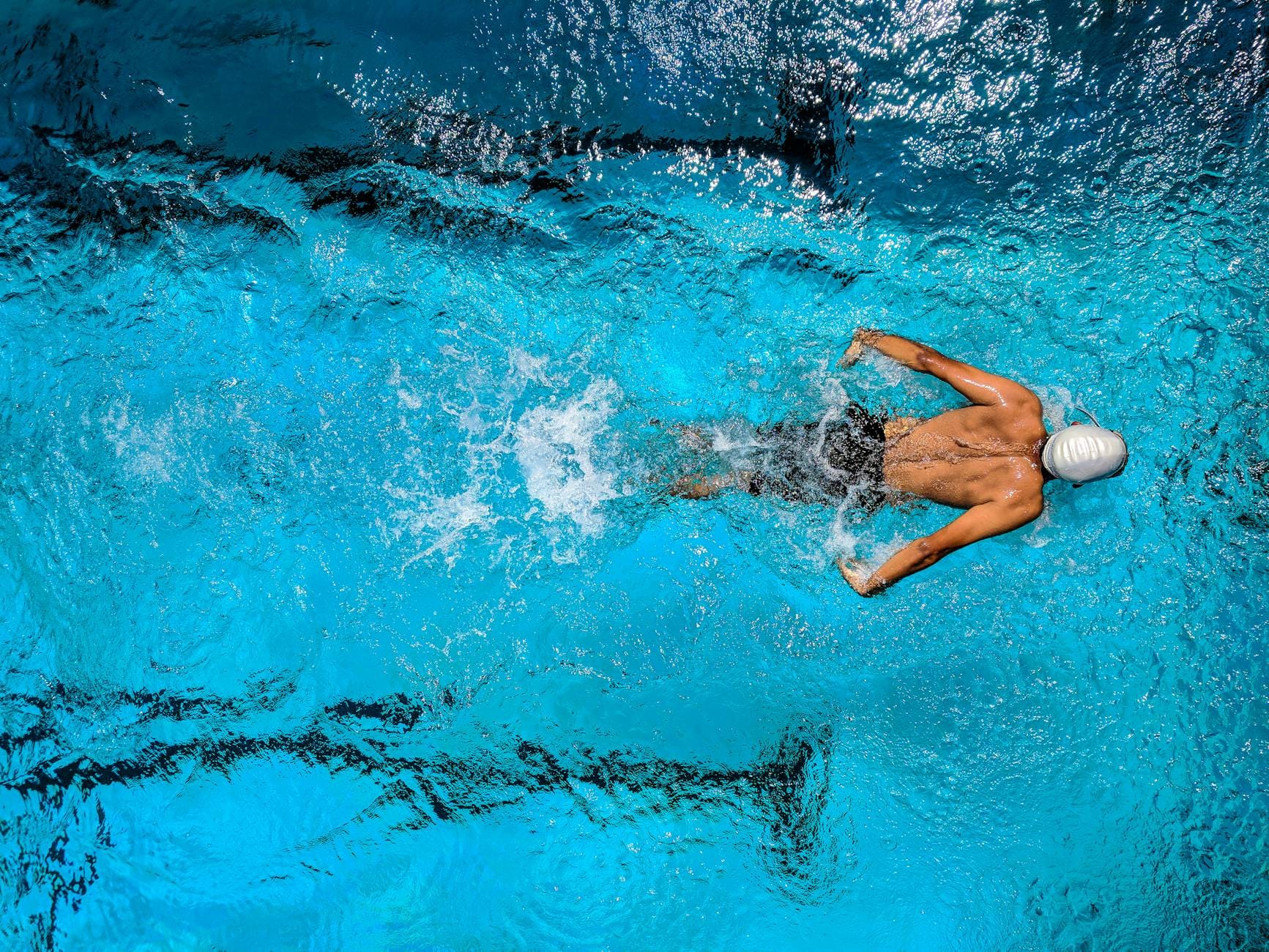
Swimming: The Ultimate Low-Impact Calorie Burner
Swimming is an excellent choice for those seeking a high-calorie burn without putting stress on their joints. This versatile exercise offers numerous benefits and can be adapted to suit various fitness levels.
Calories Burned per Hour
Swimming is a highly effective calorie-burning activity. Here’s a comparison of calories burned per hour for different swimming intensities:
| Intensity | Calories Burned (155 lb person) |
|---|---|
| Moderate | 400-500 calories |
| Vigorous | 600-700 calories |
| Butterfly | 800-900 calories |
Different Swimming Strokes and Their Effectiveness
Various swimming strokes offer unique benefits and calorie-burning potential:
- Butterfly: Highest calorie burn, works entire body
- Freestyle: Efficient and great for endurance
- Breaststroke: Ideal for beginners, works legs and core
- Backstroke: Excellent for improving posture and back muscles
Pool Exercises Beyond Swimming
To maximize your water workout, try these additional exercises:
- Water jogging
- Aqua aerobics
- Treading water
- Pool planks
Tips for Maximizing Calorie Burn in the Water
- Incorporate interval training
- Use resistance tools like water dumbbells or paddle boards
- Focus on proper form to engage more muscles
- Gradually increase workout duration and intensity
Swimming offers a low-impact, high-calorie burning option suitable for all fitness levels. By incorporating various strokes and pool exercises, you can create an effective and enjoyable workout routine that burns calories while being gentle on your joints.
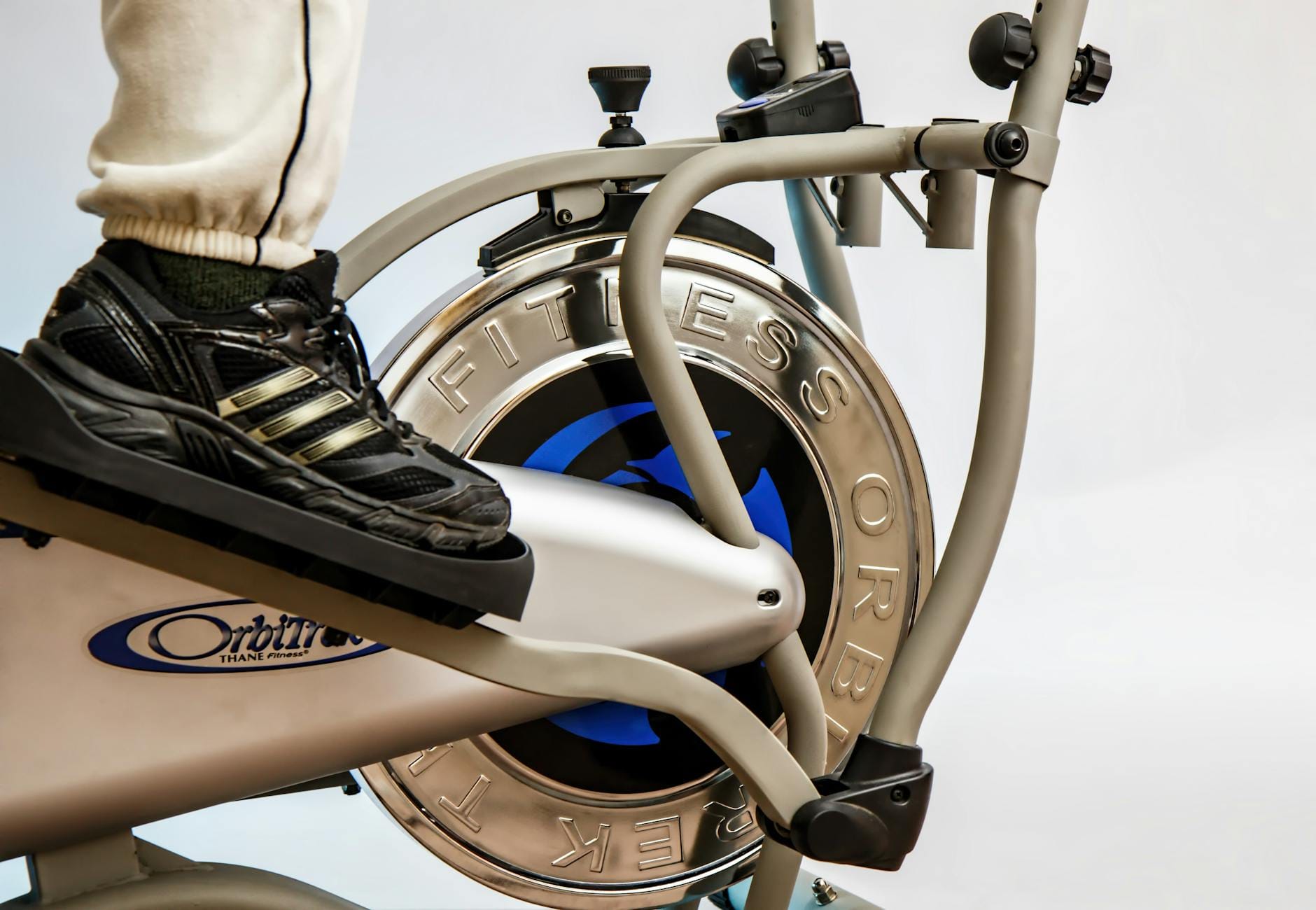
Elliptical Training: Smooth Motion, High Results
Now that we’ve explored swimming, let’s dive into another excellent low-impact, high-calorie burning exercise: elliptical training. This versatile machine offers a smooth, joint-friendly motion while delivering impressive calorie-burning results.
Calorie-burning potential
Elliptical training can torch a significant number of calories, making it an excellent choice for weight loss and cardiovascular fitness. Here’s a comparison of calorie burn for a 150-pound person during 30 minutes of exercise:
| Intensity | Calories Burned |
|---|---|
| Low | 170-240 |
| Moderate | 270-320 |
| High | 340-400 |
Proper form and technique
To maximize your elliptical workout:
- Maintain an upright posture
- Keep your core engaged
- Push through your heels
- Use a natural arm swing
Interval training on the elliptical
Boost your calorie burn with interval training:
- Warm up for 5 minutes at a moderate pace
- Alternate 1 minute of high intensity with 2 minutes of recovery
- Repeat for 20-30 minutes
- Cool down for 5 minutes
Combining upper and lower body movements
Engage more muscle groups by:
- Using the moving handlebars
- Incorporating reverse pedaling
- Adjusting incline and resistance
With these techniques, elliptical training offers a low-impact, high-calorie burning workout that’s easy on your joints but tough on calories. Next, we’ll explore how cycling can provide similar benefits with both indoor and outdoor options.
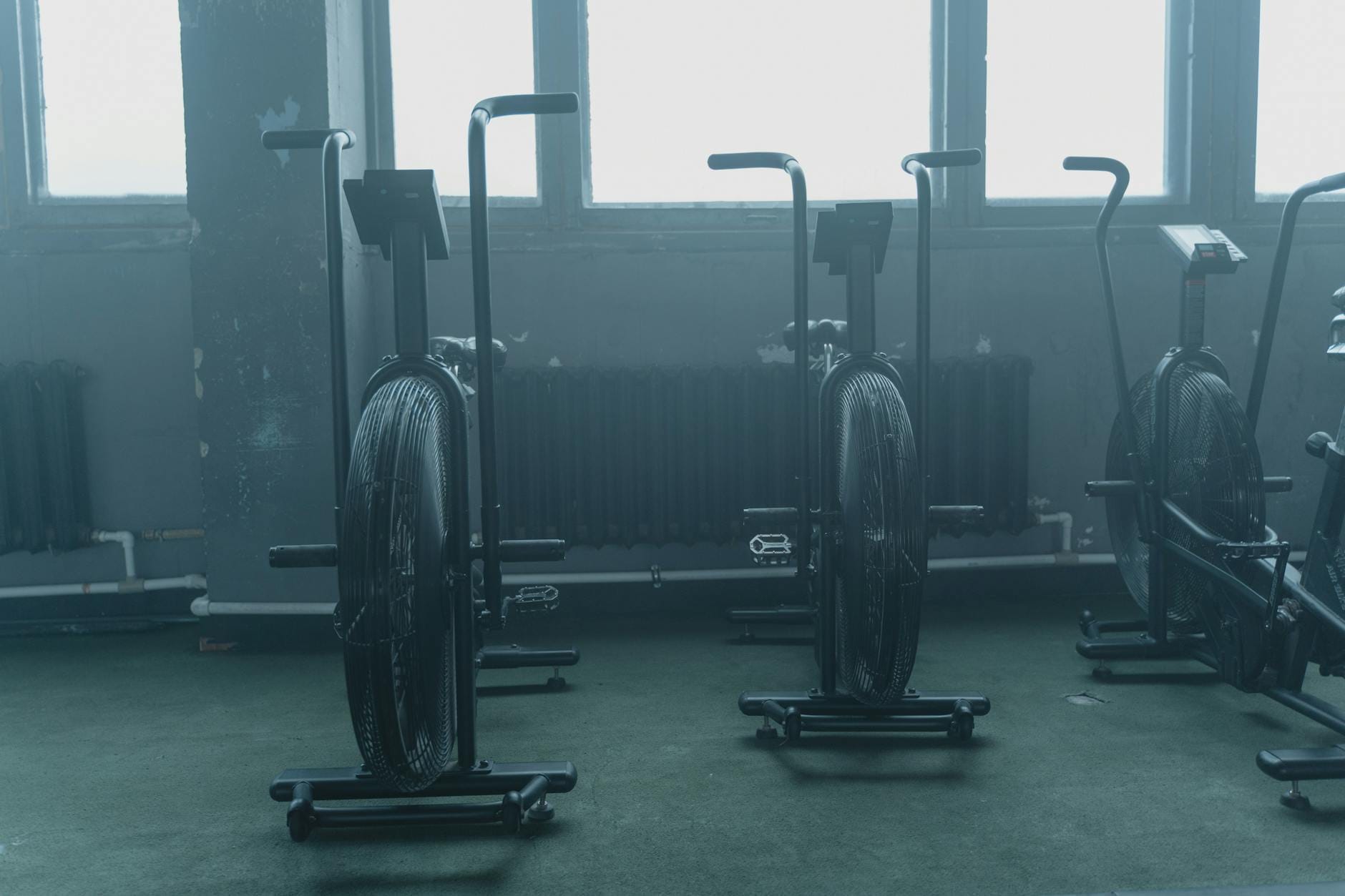
Cycling: Indoor and Outdoor Options
Cycling is an excellent low-impact exercise that can burn a significant number of calories while being gentle on your joints. Whether you prefer indoor or outdoor cycling, this versatile activity offers numerous options to suit your preferences and fitness goals.
Calories Burned During Various Cycling Intensities
The number of calories burned while cycling depends on factors such as intensity, duration, and body weight. Here’s a breakdown of estimated calorie burn for a 150-pound person:
| Intensity Level | Calories Burned per Hour |
|---|---|
| Leisurely | 300-400 |
| Moderate | 500-600 |
| Vigorous | 700-900 |
| High-Intensity | 1000+ |
Stationary Bikes vs. Outdoor Cycling
Both stationary bikes and outdoor cycling have their advantages:
Stationary bikes:
- Convenient and weather-independent
- Easier to control resistance and intensity
- Safer for beginners
Outdoor cycling:
- More engaging and varied scenery
- Provides fresh air and vitamin D exposure
- Challenges balance and core strength
Spin Classes for Group Motivation
Spin classes offer a high-energy, instructor-led cycling experience that can boost motivation and push you to new limits. These classes typically incorporate:
- Interval training
- Resistance changes
- Choreographed movements
- Energizing music
Incorporating Hills and Resistance for Increased Burn
To maximize calorie burn during cycling:
- Add hill climbs or increase resistance
- Incorporate interval training
- Try standing climbs
- Experiment with different cadences
By varying your cycling routine and including these elements, you can significantly increase your calorie burn while enjoying a low-impact workout. Next, we’ll explore another excellent low-impact, high-calorie burning exercise: rowing.
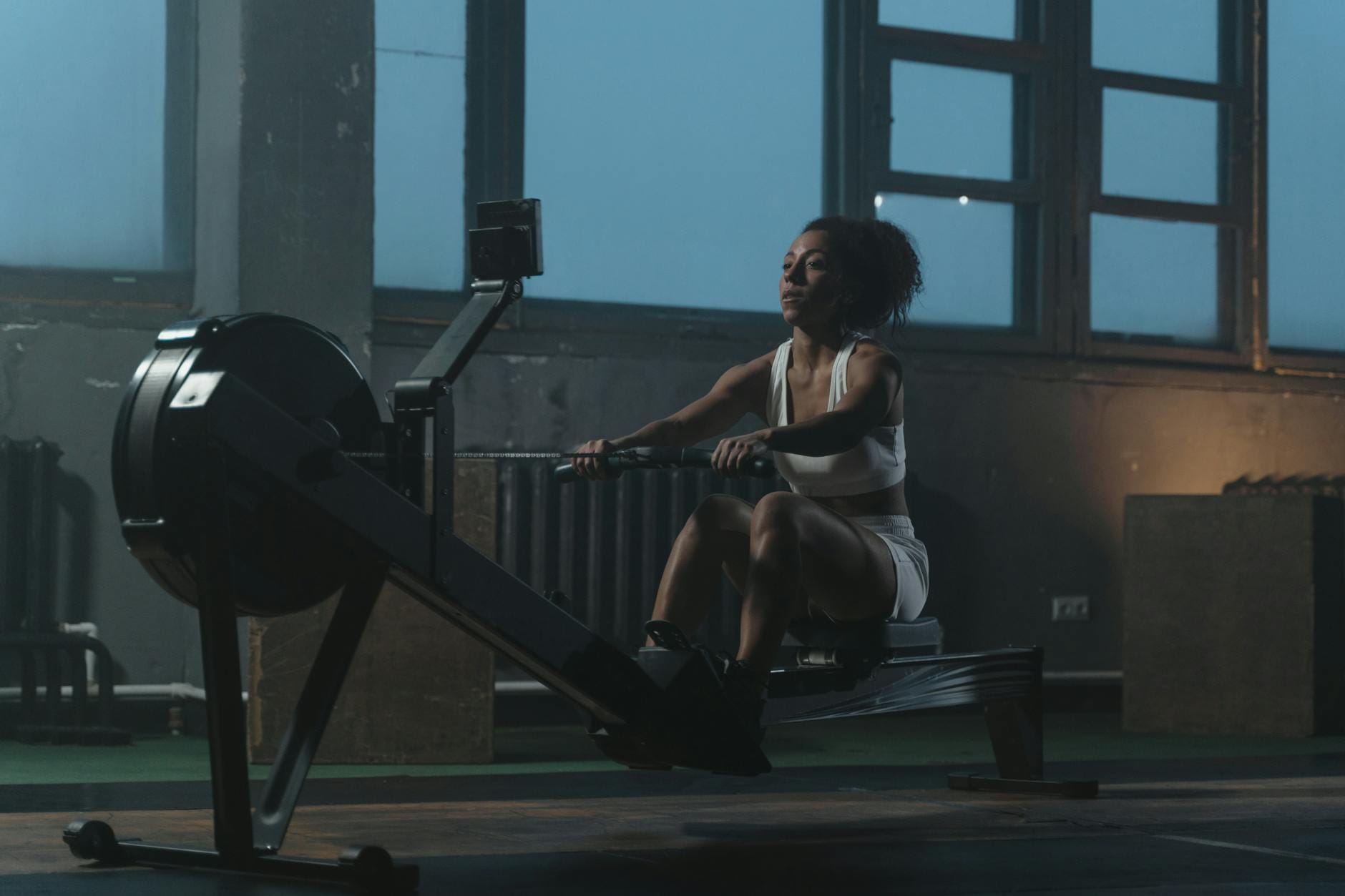
Rowing: Full-Body Workout with Minimal Impact
Rowing is an exceptional low-impact exercise that delivers a high-calorie burn while engaging nearly every muscle group in your body. This versatile workout offers numerous benefits for fitness enthusiasts of all levels.
Calories burned during rowing sessions
Rowing is a calorie-torching powerhouse, with the potential to burn between 400-800 calories per hour, depending on intensity and individual factors. Here’s a breakdown of calorie burn based on different intensity levels:
| Intensity Level | Calories Burned (per hour) |
|---|---|
| Light | 400-500 |
| Moderate | 500-600 |
| Vigorous | 600-800 |
Proper rowing technique for maximum efficiency
To maximize calorie burn and prevent injury, proper technique is crucial:
- Catch: Start with knees bent, arms extended, and body leaning slightly forward
- Drive: Push with legs, engage core, and pull with arms
- Finish: Lean back slightly, legs extended, and handle pulled to chest
- Recovery: Return to starting position, arms extend first, then body leans forward
Rowing machines vs. water rowing
While both options provide excellent workouts, they offer unique experiences:
- Rowing machines: Consistent resistance, adjustable settings, convenient for home use
- Water rowing: More natural feel, variable resistance based on stroke power, often found in specialized studios
Interval training strategies for rowing
Incorporate these interval workouts to boost calorie burn and improve cardiovascular fitness:
- Tabata-style: 20 seconds all-out effort, 10 seconds rest, repeat for 4 minutes
- Pyramid intervals: Increase work time (30s, 45s, 60s) then decrease, with equal rest periods
- Distance challenges: Alternate between 250m sprints and 2-minute moderate-paced rows
Now that we’ve explored the benefits of rowing, let’s move on to another effective low-impact, high-calorie burning exercise option.

Low-Impact HIIT: Intense Calorie Burn without the Stress
Now that we’ve explored various low-impact, high-calorie burning exercises, let’s dive into Low-Impact High-Intensity Interval Training (HIIT). This method offers an intense calorie burn without putting excessive stress on your joints.
Designing a low-impact HIIT routine
Creating an effective low-impact HIIT routine involves:
- Warm-up (5 minutes)
- High-intensity intervals (20-30 seconds)
- Low-intensity recovery periods (40-60 seconds)
- Cool-down (5 minutes)
Repeat the high-intensity and recovery periods for 15-20 minutes for optimal results.
Equipment-free exercises
Here’s a table of equipment-free, low-impact HIIT exercises:
| Exercise | Muscle Group | Intensity Level |
|---|---|---|
| Modified Burpees | Full body | High |
| Mountain Climbers | Core, legs | High |
| Plank Jacks | Core, shoulders | Medium |
| High Knees (marching) | Legs, cardiovascular | High |
Incorporating resistance bands and light weights
To increase intensity without impact, try:
- Resistance band squats
- Light dumbbell rows
- Banded lateral walks
- Weighted arm circles
Adjusting intensity levels for different fitness levels
Customize your HIIT workout by:
- Modifying exercise duration
- Adjusting work-to-rest ratios
- Choosing easier or more challenging exercise variations
Remember, the key to effective low-impact HIIT is maintaining proper form and pushing yourself during high-intensity intervals while allowing adequate recovery. Next, we’ll explore how to create a balanced routine combining various low-impact, high-calorie burning exercises.
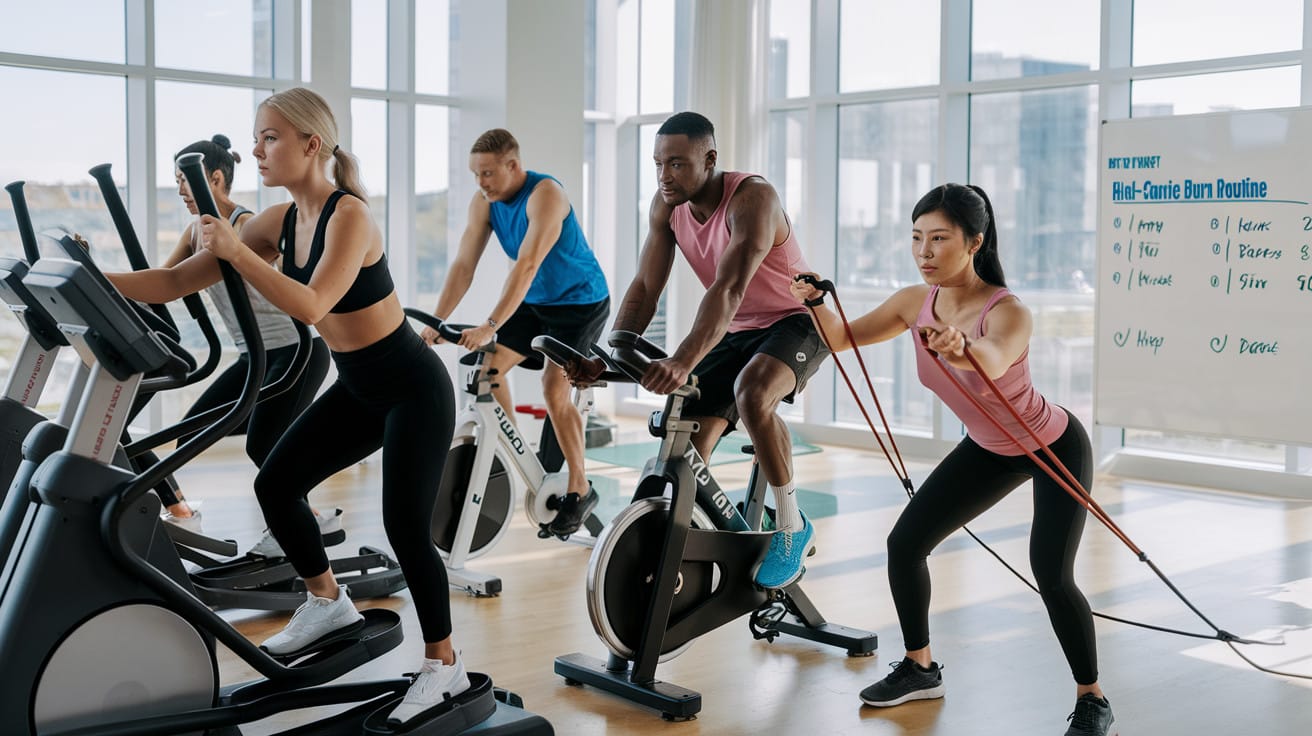
Creating a Balanced Low-Impact, High-Calorie Burning Routine
Combining different exercises for variety
To maximize calorie burn and prevent boredom, incorporate a mix of low-impact exercises into your routine. Here’s a sample combination:
| Exercise | Duration | Calories Burned (approx.) |
|---|---|---|
| Swimming | 30 mins | 250-350 |
| Cycling | 45 mins | 400-600 |
| Rowing | 20 mins | 150-250 |
| Elliptical | 30 mins | 270-400 |
Structuring your weekly workout plan
Create a balanced plan that targets different muscle groups and energy systems:
- Monday: 45-minute swim session
- Tuesday: 30-minute elliptical + 20-minute rowing
- Wednesday: Rest or light stretching
- Thursday: 60-minute cycling class
- Friday: 30-minute low-impact HIIT
- Saturday: 45-minute swim or row
- Sunday: Active recovery (light walk or yoga)
Progressing safely and effectively
Gradually increase intensity and duration to avoid injury and plateaus:
- Week 1-2: Focus on form and building endurance
- Week 3-4: Increase duration by 5-10% per session
- Week 5-6: Introduce interval training for 1-2 sessions per week
- Week 7-8: Increase overall intensity while maintaining proper form
Complementing exercises with proper nutrition
Support your workouts with a balanced diet:
- Consume adequate protein for muscle recovery
- Include complex carbs for sustained energy
- Stay hydrated before, during, and after exercises
- Consider post-workout smoothies for quick nutrient replenishment
By following this balanced approach, you’ll maximize calorie burn while minimizing impact on your joints, ensuring long-term success in your fitness journey.
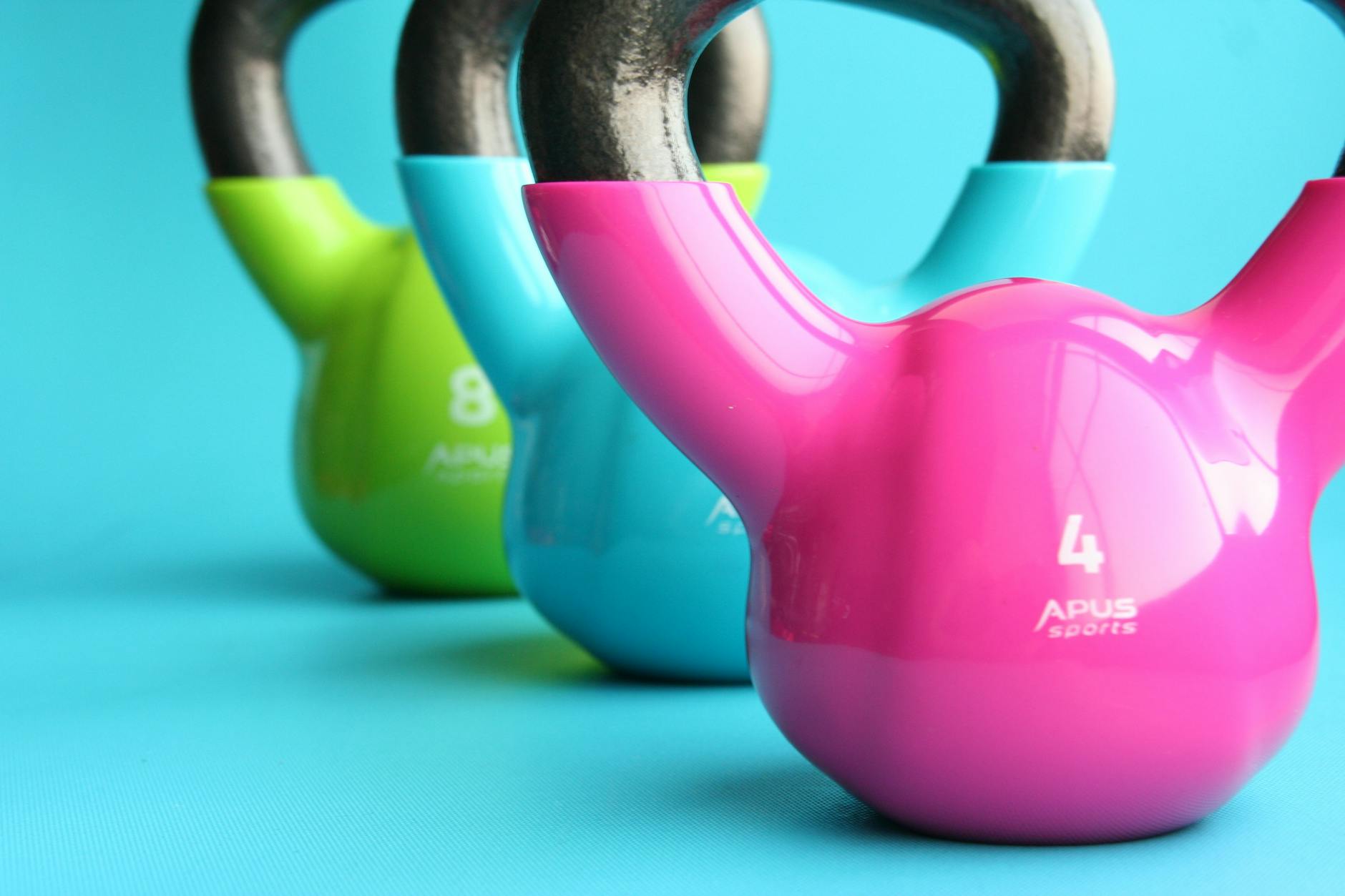
Low-impact exercises that burn high calories offer an excellent solution for those looking to shed pounds without putting excessive stress on their joints. From swimming and elliptical training to cycling, rowing, and low-impact HIIT, there are numerous options to choose from that cater to different preferences and fitness levels. These exercises not only help in burning calories effectively but also provide full-body workouts, improve cardiovascular health, and can be easily incorporated into a balanced fitness routine.
As you embark on your fitness journey, remember that consistency is key. Start with activities you enjoy and gradually increase the intensity and duration of your workouts. By combining various low-impact, high-calorie burning exercises, you can create a diverse and engaging fitness plan that keeps you motivated and helps you achieve your weight loss goals while protecting your joints. Don’t hesitate to consult with a fitness professional to tailor a program that best suits your individual needs and abilities.
